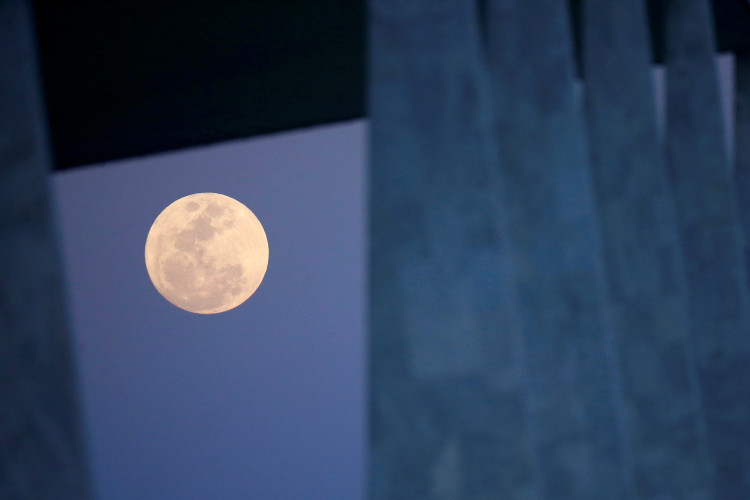New research has revealed that the moon has started sporting a slightly red hue, and it's likely due to Earth's doing. The atmosphere of our planet may be causing the moon to rust.
Also known as iron oxide, rust is a reddish compound that appears when iron comes in contact with oxygen and water. This chemical reaction also happens on Mars, thus the nickname, the Red Planet. It acquired the color long ago when iron on its surface got mixed up with water and oxygen, according to a statement from NASA's Jet Propulsion Laboratory (JPL).
However, not all celestial environments should be rusting, most especially the moon, which has no atmosphere and is incredibly dry.
"It's very puzzling," study lead author Shuai Li said in the statement. "The Moon is a terrible environment for [rust] to form in."
Li was analyzing data from the JPL Moon Mineralogy Mapper, which was on board the Chandrayaan-1 orbiter of the Indian Space Research Organization while surveying the moon in 2008 when he realized that the moon's poles had compositions very distinct from the majority of its surface.
The Moon Mineralogy Mapper observed spectra, or light wavelengths reflected off different moon surfaces during its mission to examine its surface composition. As Li focused on the poles, he found the polar surfaces of the moon had iron-rich rocks with spectral signatures resembling that of hematite. The mineral hematite, usually found in the surface of the Earth, is a special type of iron oxide with the formula Fe2O3.
To make iron rusty red, it needs what's called an oxidizer - a molecule like oxygen that extracts electrons from a substance like iron. But the solar wind from the sun, a stream of charged particles continually hitting the moon with hydrogen, has the reverse reaction. Hydrogen is a reducer or a molecule that gives other molecules electrons. Rust should not be able to grow on the moon without protection from this solar wind, such as the magnetic field that protects our world from it.
But there's rust, and our home planet could be the reason why.
According to the statement, the moon does not have an atmosphere of its own to produce enough oxygen, but it has small quantities provided by the Earth's atmosphere. This terrestrial oxygen flies to the moon through an elongated magnetic field extension called a "magnetotail."
These are all theories, however, and more evidence is needed to explain precisely why the moon rustles. More interestingly, small quantities of hematite were detected at the far side of the moon, which, according to the paper, should be too far for Earth's oxygen to take a trip on the planet's magnetotail.
The report was published in the Science Advances journal on Sept 2.




